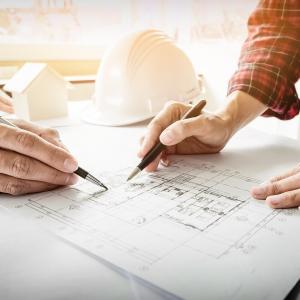An Architect’s Guide to Printer Selection

While commercial printing might be the go-to for architects seeking high-quality print jobs, in-house printers can be a cost-effective way to streamline a firm’s design workflows and reduce cost per print. Architects should keep several considerations in mind when making this choice.
Review Printer Quality and Compatibility
Quality and compatibility should be the top considerations when selecting an in-house device. Printing technology has advanced to the point where professional-level printing is possible with even small and affordable machines. Make sure the printer chosen is capable of producing images with sharp details and consistent colors. Printers such as the HP PageWide XL 4500 offer great ways for architects to improve their print quality and speed.
Most wide format printers on the market are capable of producing quality print jobs, but architects must also ensure that the printer selected is compatible with the drafting programs in use at their firm. Different printers may be compatible with various programs, such as AutoCAD, Vectorworks, or DraftSight. Work with the printer supplier to find a device that can integrate with these project management tools, and if possible, ask the supplier to test a few print jobs before committing to the purchase.
Understand Lifecycle Costs
Architects should consider all the costs of their printer choice across its entire lifecycle. This includes the initial investment and its operational costs. High-end printers are generally more expensive up front, but often use superior print heads and inks that need less frequent replacement, which contribute to lower operating costs in the long-term. Keep these factors in mind when making the decision.
Considerations for In-House Blueprint Production
Naturally, contractors require high-quality blueprints for each job, and it’s up to architects to provide these materials. There are several unique considerations that architects should keep in mind when creating blueprints:
- Material choice: Before blueprints can be reproduced, they must first be drawn on transparencies that allow light to pass through—a critical part of the blueprint printing process.
- Printer choice: Specialized blueline printers are used to create copies of blueprints. These printers use a diazo process instead of traditional ink to create documents. While this process is old-fashioned compared to the advanced printing technologies in use today, it remains a rapid and cost-efficient method of blueprint production for monochromatic prints.
Think Long-Term
It might be tempting to invest in high-end, specialized architectural printers that offer top-of-the-line quality, but consider the needs of your firm when making your choice. Most architectural printers pull double duty in a firm, acting as all-purpose machines for general office use. Keep this in mind during the selection process. Printers such as the HP Designjet Z5400 are excellent wide format printers that provide flexibility for any office need.
Above all, architects should think long-term, review all of the options at their disposal, and work with their wide format printer suppliers to find the options best suited to their unique needs.
